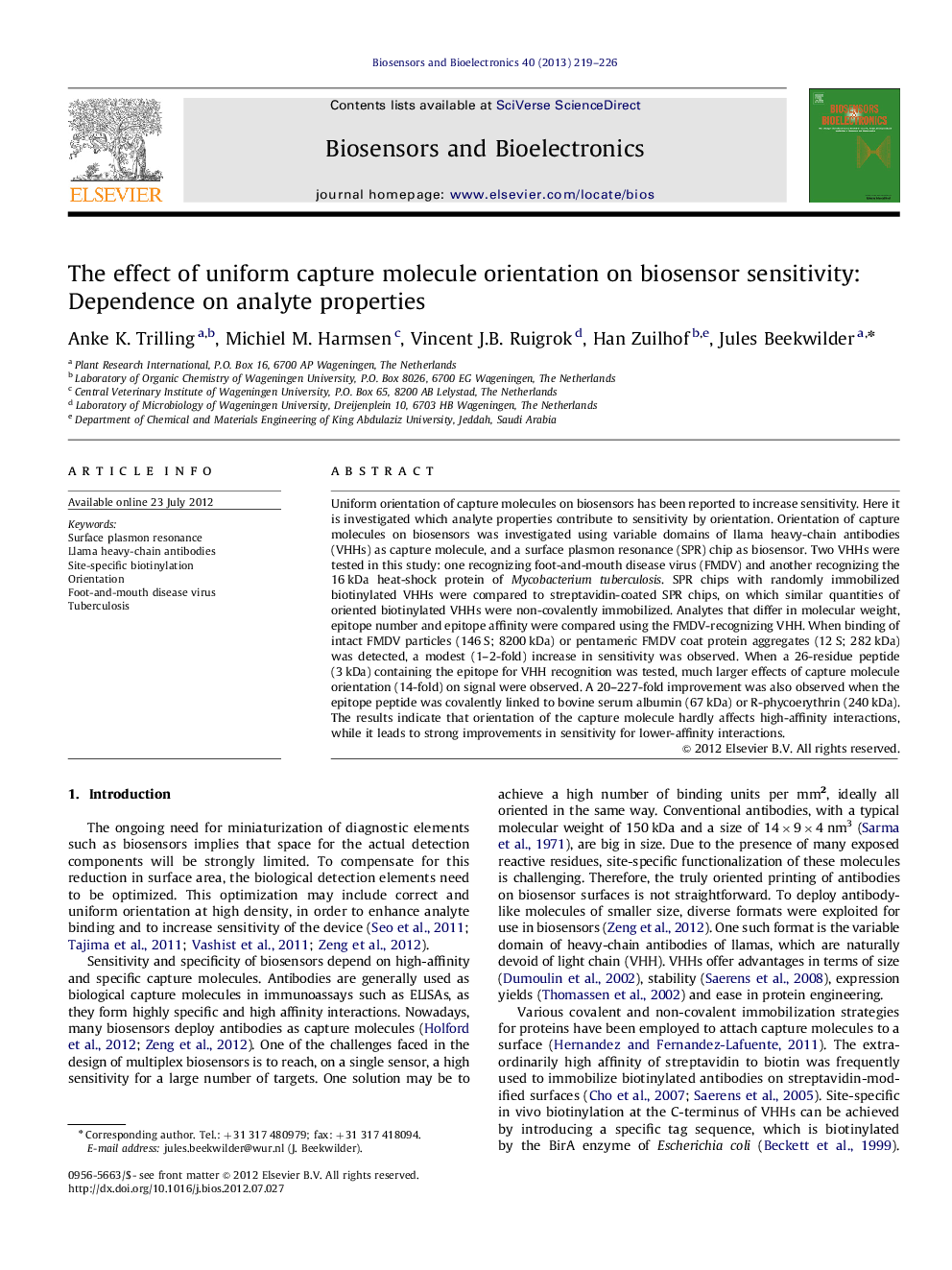| Article ID | Journal | Published Year | Pages | File Type |
|---|---|---|---|---|
| 7234593 | Biosensors and Bioelectronics | 2013 | 8 Pages |
Abstract
Uniform orientation of capture molecules on biosensors has been reported to increase sensitivity. Here it is investigated which analyte properties contribute to sensitivity by orientation. Orientation of capture molecules on biosensors was investigated using variable domains of llama heavy-chain antibodies (VHHs) as capture molecule, and a surface plasmon resonance (SPR) chip as biosensor. Two VHHs were tested in this study: one recognizing foot-and-mouth disease virus (FMDV) and another recognizing the 16Â kDa heat-shock protein of Mycobacterium tuberculosis. SPR chips with randomly immobilized biotinylated VHHs were compared to streptavidin-coated SPR chips, on which similar quantities of oriented biotinylated VHHs were non-covalently immobilized. Analytes that differ in molecular weight, epitope number and epitope affinity were compared using the FMDV-recognizing VHH. When binding of intact FMDV particles (146Â S; 8200Â kDa) or pentameric FMDV coat protein aggregates (12Â S; 282Â kDa) was detected, a modest (1-2-fold) increase in sensitivity was observed. When a 26-residue peptide (3Â kDa) containing the epitope for VHH recognition was tested, much larger effects of capture molecule orientation (14-fold) on signal were observed. A 20-227-fold improvement was also observed when the epitope peptide was covalently linked to bovine serum albumin (67Â kDa) or R-phycoerythrin (240Â kDa). The results indicate that orientation of the capture molecule hardly affects high-affinity interactions, while it leads to strong improvements in sensitivity for lower-affinity interactions.
Related Topics
Physical Sciences and Engineering
Chemistry
Analytical Chemistry
Authors
Anke K. Trilling, Michiel M. Harmsen, Vincent J.B. Ruigrok, Han Zuilhof, Jules Beekwilder,
